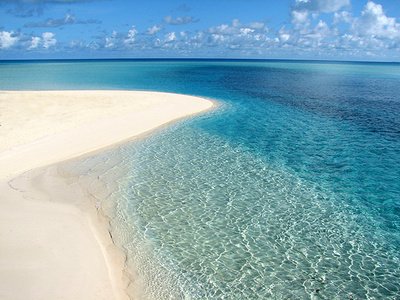 “Ouvea is everything you’d expect in a South Pacific island. Twenty kilometers of unbroken white sands border the lagoon on the west side of the island and extend far out from shore to give the water a turquoise hue. The wide western lagoon, protected by a string of coral islands and a barrier reef, is the only one of its kind in the Loyalties. On the ocean side are rocky cliffs, pounded by surf, but fine beaches may be found even here. At one point on this narrow atoll only 450 meters separates the two coasts. Traditional circular houses with pointed thatched roofs are still common in the villages”.
“Ouvea is everything you’d expect in a South Pacific island. Twenty kilometers of unbroken white sands border the lagoon on the west side of the island and extend far out from shore to give the water a turquoise hue. The wide western lagoon, protected by a string of coral islands and a barrier reef, is the only one of its kind in the Loyalties. On the ocean side are rocky cliffs, pounded by surf, but fine beaches may be found even here. At one point on this narrow atoll only 450 meters separates the two coasts. Traditional circular houses with pointed thatched roofs are still common in the villages”.
Those words appeared in the 1985 edition of my South Pacific Handbook after a visit in 1983. Just over 20 years later I returned to Ouvea to discover that little had changed in this large French colony east of Australia.
Most Ouveans still live in traditional thatched case (houses) and the beach is as dazzling as ever. On my first evening there, as I watched the red fireball set slowly across the lagoon, I felt a strong affinity with my previous visit.
Yet something terrible had happened in my absence. On May 5, 1988, 300 French elite troops stormed a cave near Gossanah in northern Ouvea to rescue 16 gendarmes captured two weeks earlier by Melanesian freedom fighters.
Nineteen Kanaks (the collective name used by the indigenous peoples of New Caledonia) died in the assault, including several who suffered extrajudicial execution at the hands of the French police after being wounded and taken prisoner. None of the hostages had been harmed.
Thus began one of the final chapters of what is now known as the evenements (events) of the 1980s. Three years earlier independence leader Eloi Machoro had been murdered in cold blood by police snipers as he stood outside a rural farmhouse near La Foa, on New Caledonia’s main island, Grand Terre.
By 1987 France had 14,000 troops stationed in its mineral-rich Melanesian colony, one for every five Kanaks. The independence movement was to be crushed one way or another.
When I tried to visit the cave at Gossanah on my recent trip, I was told that the area was taboo to allow the spirits time to rest.
Instead I was permitted to visit the grave of Djoubelly Wea in Gossanah and allowed to take pictures of his home. My host on Ouvea told me the story. Evidently, the hostages had been taken by young Kanak activists from other parts of the island, and the captive gendarmes were brought to Gossanah only because the cave was considered remote.
Residents of the area weren’t involved. Yet when the French police arrived in search of their comrades, they rounded up the people of Gossanah and assembled them on a football field in front of the village church.
There they were tortured for information, and Wea’s father was among those who died of shock. Later 33 Ouveans were sent to prison in France, Djoubelly Wea among them.
These events chastened Kanaks and French alike, and the heads of the main political parties, the Kanak leader Jean-Marie Tjibaou and the representative of the French settlers Jacques Lafleur, were called to Paris by Prime Minister Michel Rocard to negotiate and eventually sign a peace treaty known as the Matignon Accords.
A referendum on independence was promised in 1998, and massive economic aid was to be channeled into the Kanak regions. An amnesty was granted to all those arrested during the troubles, and no investigation into the Ouvea massacre or the murders of several dozen other Kanaks by French settlers or troops would be required.
Fast forward to May 1989, as the top Kanak leaders Jean-Marie Tjibaou and Yeiwene Yeiwene arrive on Ouvea for a commemorative ceremony exactly one year after the massacre.
As the leaders are being received at the chefferie (chiefly house) of Wadrilla near the center of the island, Djoubelly Wea steps forward and shoots the pair dead at point blank range. Wea was reflecting a feeling still palpable in New Caledonia that Tjibaou had sold out to the French and derailed the struggle of independence.
Tjibaou’s bodyguard killed Wea, the final shot of the evenements. Today the chefferie of Wadrilla is much the same as it was in 1989, a large thatched case surrounded by a palisade of driftwood logs.
Across the coastal highway, a large monument has been erected to the 19 Kanak martyrs of 1988. Designed with two curving white walls to resemble a cave, the monument bears the photo, name, and date of birth of each victim.
Their traditional war clubs have been placed on the back side of the monument and their remains are interred below.
No memorial to Jean-Marie Tjibaou exists on Ouvea but the French have constructed a massive cultural center to his memory in their stronghold Noumea.
In fairness, it must be said that Tjibaou only considered the Matignon Accords a temporary stop on the road to independence. His assassination froze the agreement into a sort of permanent solution which the French have used to justify continuing colonial rule ever since.
The promised 1998 referendum was never held. Instead an updated treaty called the Noumea Accord was signed. This postponed the referendum for another 15 or 20 years and promised many things the French government has yet to deliver.
For example, a key provision creating a special New Caledonian citizenship status intended to control immigration from France was declared unconstitutional by a French court in 1999.
Metros (metropolitan French) continue to flood into the territory (in violation of United nations resolutions on the norms of conduct for colonial powers in non-self-governing areas) and Europeans may soon from a clear majority of the population.
Toward the end of my stay I visited the Jean-Marie Tjibaou Cultural Center on the Tina Peninsula, 12 kilometers northeast of New Caledonia’s capital Noumea. Designed by Italian architect Renzo Piano, it was built by French contractors between 1994 and 1998 at a cost of over US$50 million. The center opened on May 4, 1998, 10th anniversary of the assassination of Jean-Marie Tjibaou.
No visitor can help but be impressed by the spectacular botanical garden interwoven with references to Kanak legends which encircles the center’s three villages.
A contemporary art gallery, temporary and permanent exhibitions of Kanak and other Pacific art, a library, an audiovisual room, indoor and outdoor theaters, and a large ceremonial area are only some of the center’s outstanding features.
Yet the Tjibaou Cultural Center presents Kanak culture as a regional folklore rather than a national tradition.
Events such as the Ouvea Massacre and the other murders of the 1980s are barely mentioned. A room in Village Three provides photos and texts on the life of Jean-Marie Tjibaou, but there’s no explanation as to why he was assassinated or the background of his assassin.
The 19th century land seizures and the muscle flexing and maneuvering that have prevented independence are carefully avoided. The highlight for me was an amazing three-meter-high bronze statue of Tjibaou himself, clad in a Roman toga, on a hill overlooking the center.
Tjibaou was the last real Kanak leader, and in a land where the spirits of the dead have an important role in the lives of the living, his soul must be suffering.
###
David Stanley is the author of Moon Tahiti published by Avalon Travel Publishing of Berkeley, California.
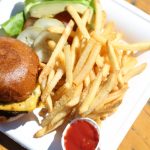
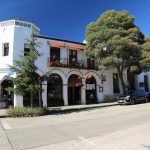
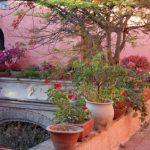
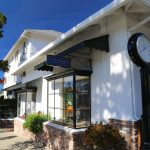

Leave a Reply